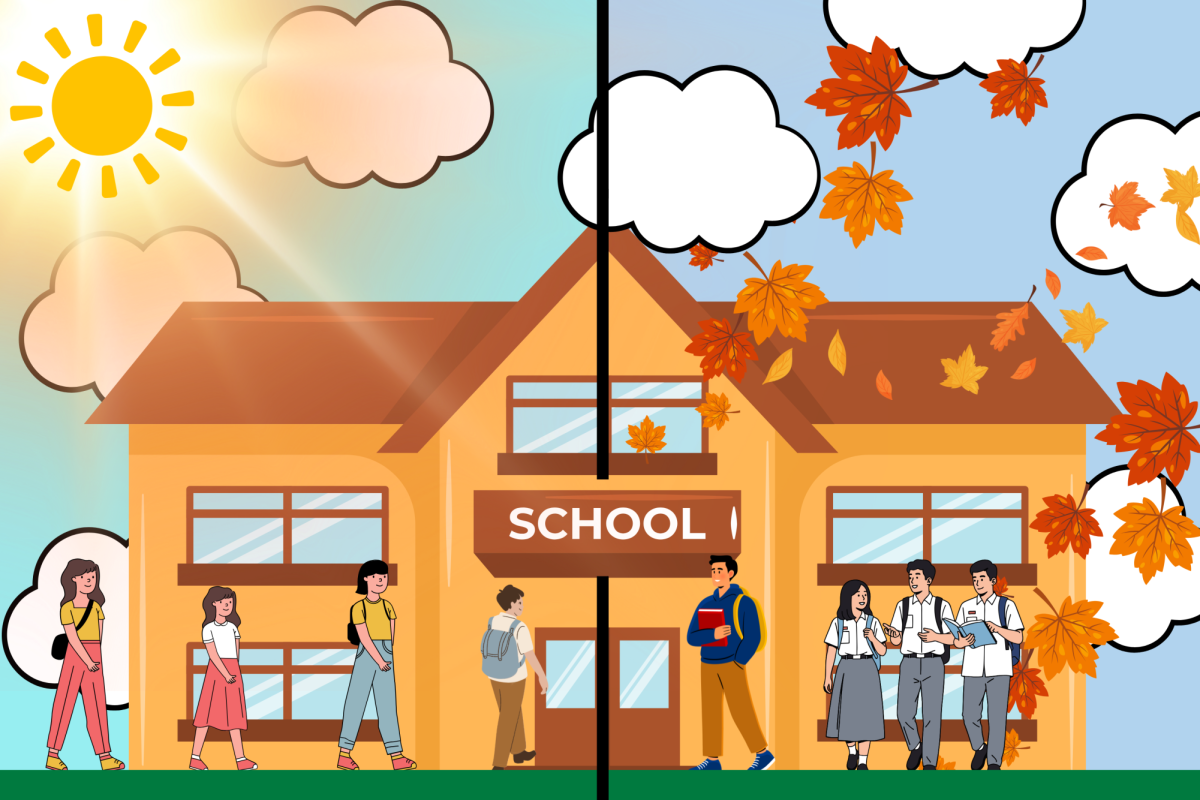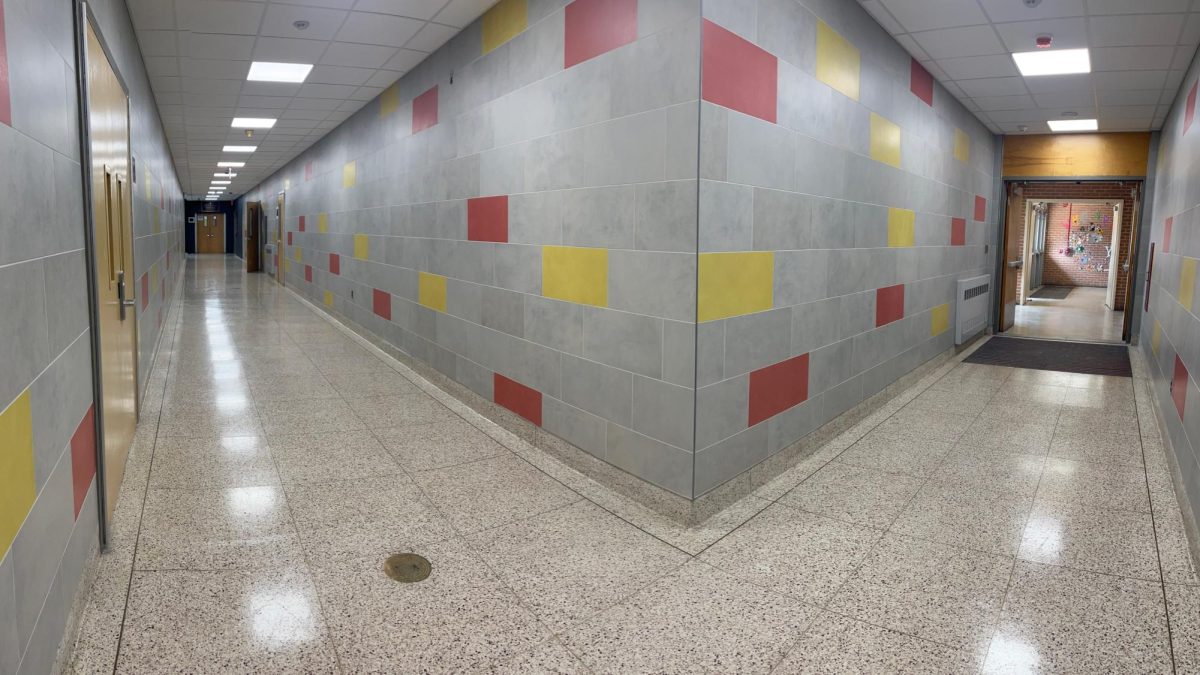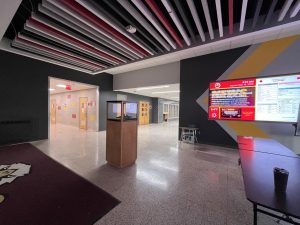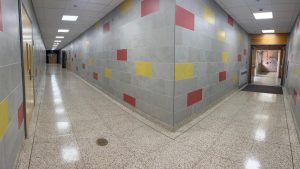Smoky Scene Creates Apocalyptic Atmosphere
Wildfire Haze Blankets Edison, Northeast US
Edison High School surrounded by thick smoke due to Canadian wildfires.
June 8, 2023
Bright yellow, hazy skies might feel like a movie scene or a rover’s image from the surface of Mars, but that has been the view through the windows of Edison High School over the past few days. Wildfire smoke from the Canadian province of Quebec drifted south and into New Jersey, leading to extremely low visibility, poor air quality, and a distinct ash smell. But how exactly did the smoke get to Edison, how long will it last, and what effects has it had on our community?
How did Canadian forests end up above Central Jersey?

In Quebec, over 160 wildfires have been reported, the majority of which are not yet under control. Abnormally warm and dry conditions throughout the month of May led to flammable forests, which were then ignited due to lightning strikes from passing thunderstorms. What little rain fell from those storms was not enough to prevent the fires from growing quickly, as 2.7 million hectares of fire had been reported for the year through May 31st, 1187% of the 10-year average.
Typical wind patterns over North America blow generally west to east, which would bring smoke from fires in Western Canada to the skies above NJ and push ash from Quebec offshore. This has become a somewhat regular summer occurrence, with hazy sunsets in the summer often attributed to smoke from western fires in the upper atmosphere. However, a somewhat unusual “blocking low” setup has kept an area of counterclockwise spin over New England for the past week, drawing the smoke from recent fires in Quebec southwards and across the border. Due to the relative proximity of these fires, as well as a lack in upper-level winds, the smoke layer is held to the surface.
In other words, the smoke is being trapped at the ground level and is being pushed directly from the source fires to New Jersey.
Fires grew on Monday, June 5, bringing an initial round of thick smoke by Tuesday evening, before a much thicker plume of smoke from Tuesday’s fire burn moved into Edison during school hours Wednesday, filling the hallways of Edison High. Local Air Quality Index (AQI) readings reached over 400, well into the “Hazardous” range of the scale. Last year, the median AQI for Middlesex County was 38, and only one day peaked above 150.
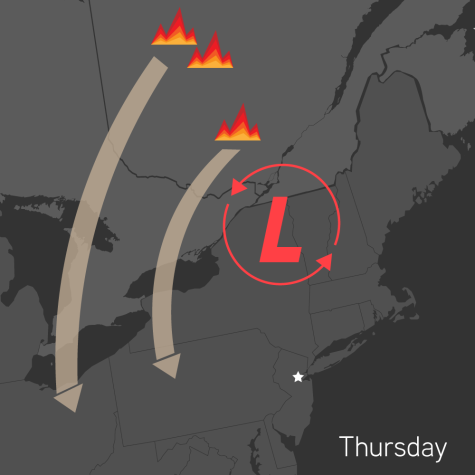
How long will this smoke last?
Thankfully, the worst of the smoke has now moved out of New Jersey, but poor air quality will remain through the end of the week. The aforementioned blocking low will drift westward, redirecting the smoke from the still-ongoing fires toward the Great Lakes and Midwest region. Smoke should still remain thick for the day Thursday before thinning out on Friday. By the weekend, the low finally clears out of the US, allowing an escape route for the smoke.
How has the smoke affected EHS and the greater Edison area?
According to AirNow.gov, a service of the Environmental Protection Agency, the small size of fire smoke particles can enter the eyes and respiratory system, causing “burning eyes, runny nose, and illnesses such as bronchitis.” However, they emphasize that “if you are healthy, you’re usually not at a major risk from short-term exposures to smoke.”
At Edison High, both teachers and students alike felt the effects of the incoming smoke. “I have a sore throat, my eyes are burning, and I have a light headache because of the smoke”, said Ms. Rachel Sandler.
“The school was foggy and smoky, and you could definitely smell the smoke inside the school,” said Sydney Huertas ‘26.
In some cases, classes had to be moved due to the smoke entering the building. By Period 12 on Wednesday, “the smoke had actually infiltrated the Cangelosi Gym, and so we had to move gym classes to the Auditorium. Because of the air conditioning, we were able to sit in circulated air in the auditorium,” said phys. ed. teacher Ms. Patricia Jaworski.
The smoke also caused extracurricular activities to be postponed, including the GSA pride ice cream social.
“The ice cream social was going to be a celebration for pride month and for completing the school year, but so many club members were concerned about their health with the smoke that we had to reschedule,” said GSA board member Sanā Prajapati ‘25. In addition, the marching band and color guard interest meetings were held entirely indoors.
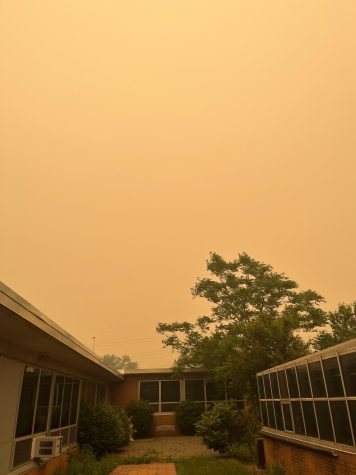
Events were also canceled across town at J.P. Stevens High School, including an end-of-year film festival. “Every year JPStudios hosts a filmfest for anyone who wants to make a film to submit [to be] judged…This year because of the smoke, we had to tentatively cancel the event, making many students’ efforts to feel like they’ve gone to waste,” said J.P. Stevens student Kisna Nihalani ‘23.
For some with pre-existing health conditions, the smoke not only intensified fears but brought back old memories. “My asthma is especially bad around this time of year with the season transitioning from spring to summer,” said Nihalani. “The smoke has brought something that I could’ve never expected. Leaving the house I feel like I’m back in quarantine, having to wear a mask, and now doing small things outside like just walking around for too long makes my lungs feel heavy.”
The effects of the wildfire smoke spread far beyond the Edison community. “Because our school isn’t fully ventilated and the smog poses a health risk, Thursday June 8th was changed to a half day, and our senior sunset on the night of June 7th was moved indoors to the cafeteria,” said East Brunswick High School student Mark Tawfik ‘23.
Edison remains under an Air Quality Alert through at least Friday, June 9.



















